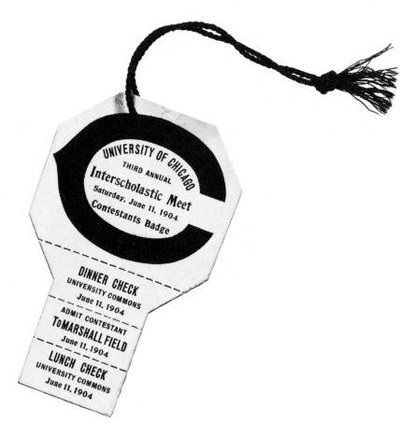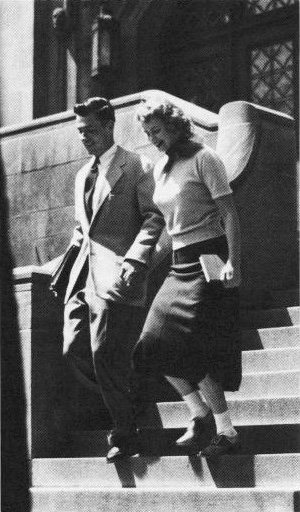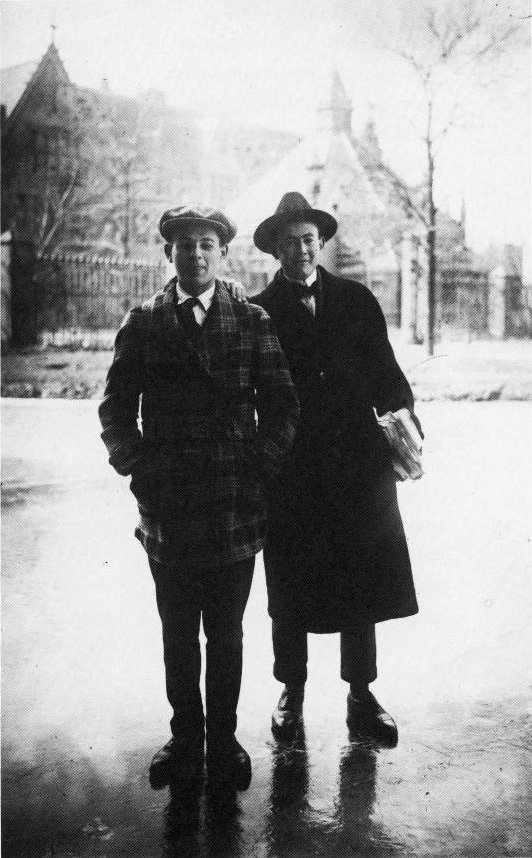Introduction

There was about the whole institution even in its first days, an air of quiet strength, a consciousness of power, that was marvelous." So wrote Madeleine Wallin (PhM 1893), recalling her experience as a member of the University of Chicago's first entering class in October 1892. For Wallin and her fellow students, there was no question that what had been created on the Midway Plaisance was a great new university. But the character of this university, its traditions, culture, and style, remained to be defined.
The primary occupation of the students, of course, was to acquire an education, and in this respect the University offered unusual opportunities. Within a year of his appointment as president in 1891, William Rainey Harper had acquired a faculty of extraordinary distinction, including eight former college presidents, five professors from Yale, and the greater part of the faculty of Clark University. Beyond this, Harper sought to create what Frederick Rudolph has called "a new model American university," with such innovations as the four-quarter academic year, an open admissions policy granting equal entry to men and women and unrestricted as to race or creed, and a vigorous program of extension studies. At a time when it was widely held that a university had to commit itself essentially either to undergraduate education or to graduate studies, Harper did not believe the two missions to be incompatible. For him, the University's ultimate emphasis was to be on graduate study, for which a superior undergraduate program was an indispensable preparation.
The University of Chicago's experiment in higher education gave the student's experience an equally experimental quality. The concentration of newly appointed faculty from so many different institutions, the unfixed state of administrative and curricular policies, and the primitive condition of the University's libraries and laboratories were all potentially daunting. The success or failure of Chicago students in adapting to and thriving in this atmosphere promised to say much about the future of the University of Chicago as a leader among American research universities.
From the outset, most Chicago students regarded extracurricular activities as a satisfying and often important accompaniment to academic life. Indeed, in the University's opening days, fourteen students gathered in Washington Park for football practice under the guidance of Amos Alonzo Stagg, Associate Professor and Director of the Department of Physical Culture; a group of students published the first campus newspaper, the University of Chicago Weekly; men organized fraternities, while women gathered to create social clubs; and across the raw, muddy, and largely empty Quadrangles students began to invent the literary, dramatic, and social organizations that would make the University a congenial place in which to learn.
In later decades, some of the extracurricular enterprises of the earliest days disappeared; others survived, although usually changed in various ways. Educational policy had its effect on the character of student life - this being dramatically true of the Hutchins era - but the student body responded to these changes with resiliency, vigor, and strong opinions.
This exhibition traces the student experience at the University over the past one hundred years, and in so doing, provides impressions of the University at every point in the educational passage from registration to graduation. As the exhibition proceeds, one may note that the original energetic quality of student life was succeeded by altered and more restrained moods, responding in part to academic leadership and doctrine as well as to broader influences in the world beyond the campus. It is also possible to detect a shift in the balance between extracurricular and academic emphases, roughly by contrasting the University's first half century with the second. President Harper actively sought to enrich student life (even personally leading the organization of a student band), and his immediate successors were equally committed to, if less heartily involved in, the busy world of student activities outside the classroom. President Robert M. Hutchins, on the other hand, regarded many extracurricular activities, at least to the extent that they were conducted in most American universities, as frivolous, expensive, and possibly subversive of the educational enterprise as he defined it. Even at the height of Hutchins's curricular reforms and the retreat from the conventional trappings of carefree college life, however, student talent and enthusiasm continued to find expression in many ways, including an extensive, flourishing program of intramural athletics.
In extracurricular activities, as in the more critical and demanding academic arena, student life at the University has been indelibly influenced by the distinctive history of the institution. Yet students of the University have skillfully adapted to their campus environment and created meaningful roles for themselves as they confronted shifting intellectual and social demands. The University has shaped its students over the span of one hundred years, and student achievements in their turn have helped to define the University's character and confirm its commitment to freedom of inquiry and individual expression.


